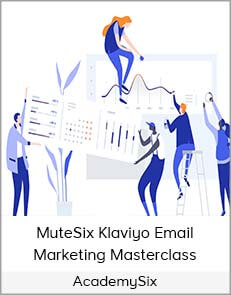Brain Everitt, etc – Cluster Analysis 5
$15.00
SalePage
Composition of mammalian milk samples, dendrogram serialization and section selection.
Brain Everitt, etc – Cluster Analysis 5
Check it out: Brain Everitt, etc – Cluster Analysis 5
Cluster analysis includes a variety of methods for classifying multivariate data into subgroups. By organizing multidimensional data into such subgroups, clustering can help to reveal the characteristics of any existing structure or patterns. These methods have proven useful in a wide range of fields such as medicine, psychology, market research, and bioinformatics.
This fifth edition of the highly successful cluster analysis includes coverage of recent developments in this area and a new chapter on finite-blend models for structured data.
Real life examples are used throughout to demonstrate the application of theory, and drawings are widely used to illustrate graphical techniques. The book is comprehensive, but relatively non-mathematical in nature and focuses on the practical aspects of cluster analysis.
KEY FEATURES:
Provides a comprehensive guide to clustering techniques with an emphasis on the practical aspects of cluster analysis.
• Provides a thorough revision of the fourth edition, including new developments in longitudinal data clustering and examples from bioinformatics and genetic research.
* Updates the chapter on Blend Models to include the latest developments and introduces a new chapter on Blend Modeling for Structured Data.
Practitioners and researchers working in the field of cluster analysis and data analysis will find this book useful.
CONTENT
Foreword.
The confirmation.
1 INTRODUCTION TO CLASSIFICATION AND CLUSTERING.
1.1 introduction.
1.2 reasons for classification.
1.3 numerical classification methods-cluster analysis.
1.4 what is a cluster?
1.5 examples of using clustering.
1.5.1 market research.
1.5.2 Astronomy.
1.5.3 psychiatry.
1.5.4 weather classification.
1.5.5 Archeology.
1.5.6 bioinformatics and genetics.
1.6 summary.
2 GRAPHIC DETECTION OF CLUSTERS.
2.1 introduction.
2.2 detection of clusters with 1D and 2D data plots.
2.2.1 histograms.
2.2.2 scatter diagrams.
2.2.3 density estimation.
2.2.4 scatterplot matrices.
2.3 using low-dimensional multidimensional data projections for graphical representations.
2.3.1 analysis of the main components of multidimensional data.
2.3.2 search projection of pursuit.
2.3.3 multidimensional scaling.
2.4 3D graphics and trellis graphics.
2.5 summary.
3. DISTANCE MEASUREMENTS.
3.1 introduction.
3.2 similarity measures for categorical data.
3.2.1 similarity measures for binary data.
3.2.2 measures of similarity for categorical data with more than two levels.
3.3 measures of dissimilarity and distance for continuous data.
3.4 similarity measures for data containing both continuous and categorical variables.
3.5 proximity measures for structured data.
3.6 measures of intergroup proximity.
3.6.1 intergroup proximity derived from the proximity matrix.
3.6.2 inter-group proximity based on group reports for continuous data.
3.6.3 intergroup proximity based on group reports for categorical data.
3.7 weighing variables.
3.8 standardization.
3.9 choice of measure of proximity.
3.10 summary.
4 HIERARCHICAL CLUSTERING.
4.1 introduction.
4.2 agglomeration methods.
1 illustrative examples of agglomeration methods.
4.2.2 standard agglomeration methods.
4.2.3 recurrent formula for agglomeration methods.
4.2.4 problems of agglomerative hierarchical methods.
4.2.5 empirical studies of hierarchical agglomeration methods.
4.3 separation methods.
4.3.1 Monothetic separation methods.
4.3.2 Political methods of separation.
4.4 application of the hierarchical clustering process.
4.4.1 dendrograms and other tree views.
4.4.2 comparison of dendrograms and measurement of their distortions.
4.4.3 mathematical properties of hierarchical methods.
4.4.4 choice of partition – the problem of the number of groups.
4.4.5 hierarchical algorithms.
4.4.6 methods for large datasets.
4.5 application of hierarchical methods.
4.5.1 dolphin whistles – agglomerative clustering.
4.5.2 needs of psychiatric patients – monothetic division clustering.
4.5.3 The globalization of cities is a polythetic method of division.
4.5.4 life stories of women – division clustering of data sequences.
4.5.5 Composition of mammalian milk samples, dendrogram serialization and section selection.
4.6 summary.
5 METHODS OF CLUSTERING OPTIMIZATION.
5.1 introduction.
5.2 clustering criteria derived from the Dissimilarity Matrix.
5.3 clustering criteria derived from continuous data.
1 trace minimization (W).
5.3.2 minimization of det (W).
5.3.3 Trace Maximization (BW1).
5.3.4 properties of clustering criteria.
5.3.5 alternative criteria for clusters of different shapes and sizes.
5.4 optimization algorithms.
5.4.1 numerical example.
5.4.2 in more detail about k-means.
5.4.3 software implementations of clustering optimization.
5.5 choice of the number of clusters.
5.6 application of optimization methods.
5.6.1 Studying Relationship Students for video games.
5.6.2 indicators of air pollution in US cities.
5.6.3 aesthetic judgment



















